How To Dehydrate Onions and 5 Recipes With Dried Onions
Read on to find out exactly how to dehydrate onions and learn preserve this versatile vegetable when your harvest is abundant! Drying onions helps to save freezer and storage space for a long term preservation solution that is simple to grab and use any time of the year. Cut down on prep time and throw these onions into all kinds of soups, sauces, and scrambles.
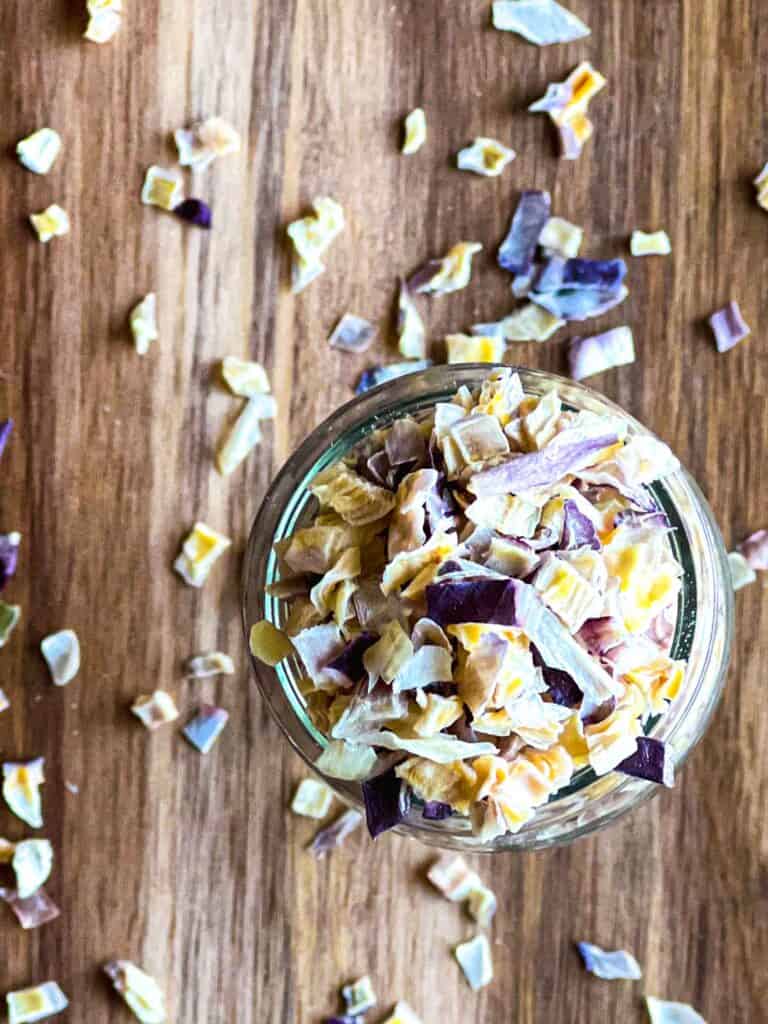
Dehydrated onions can be used in a variety of applications including casseroles, egg dishes, dips, salad dressings, stews, sauces and even pulverized into powder. Onions can be added anywhere that you need a punch of flavor!
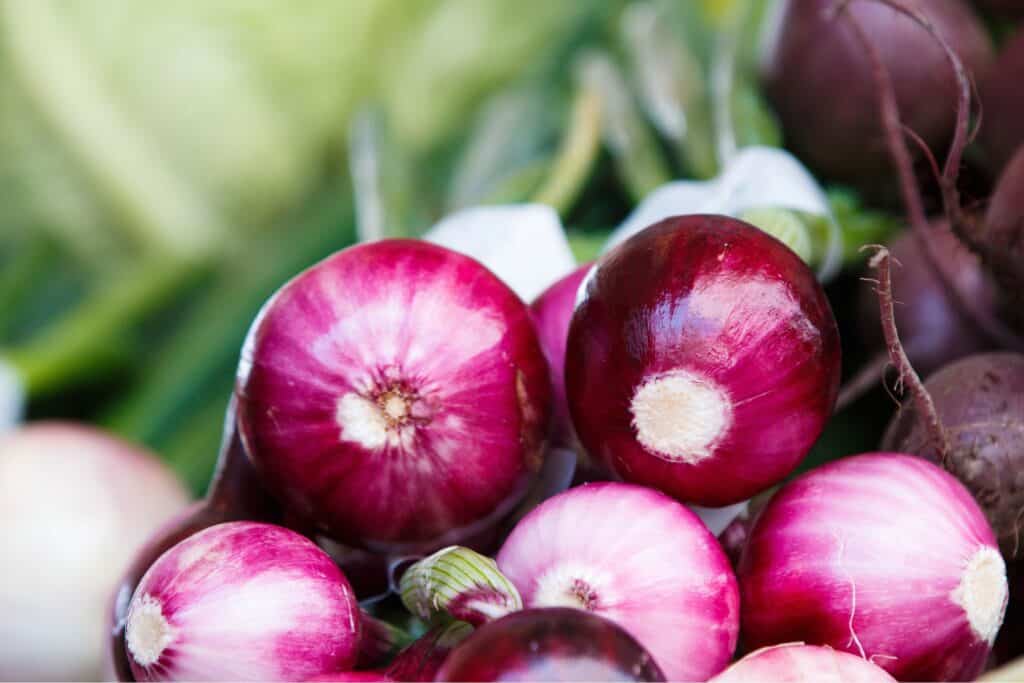
Onions are generally started from bulbs but can be started from seed if your growing season allows. Onion bulbs or bare root plants can be started early in the spring as soon as the soil is warm enough to be worked. Onions enjoy full sun and well draining soil. Dehydrating onions may seem unconventional at first, but it is super convenient to grab a handful during long winter months and saves valuable freezer, jar, and cold room space. Freeze dried onion is another great alternative but can have big upfront costs. Quickly get started drying onions today using equipment most already have!
Why Dehydrate Onions?
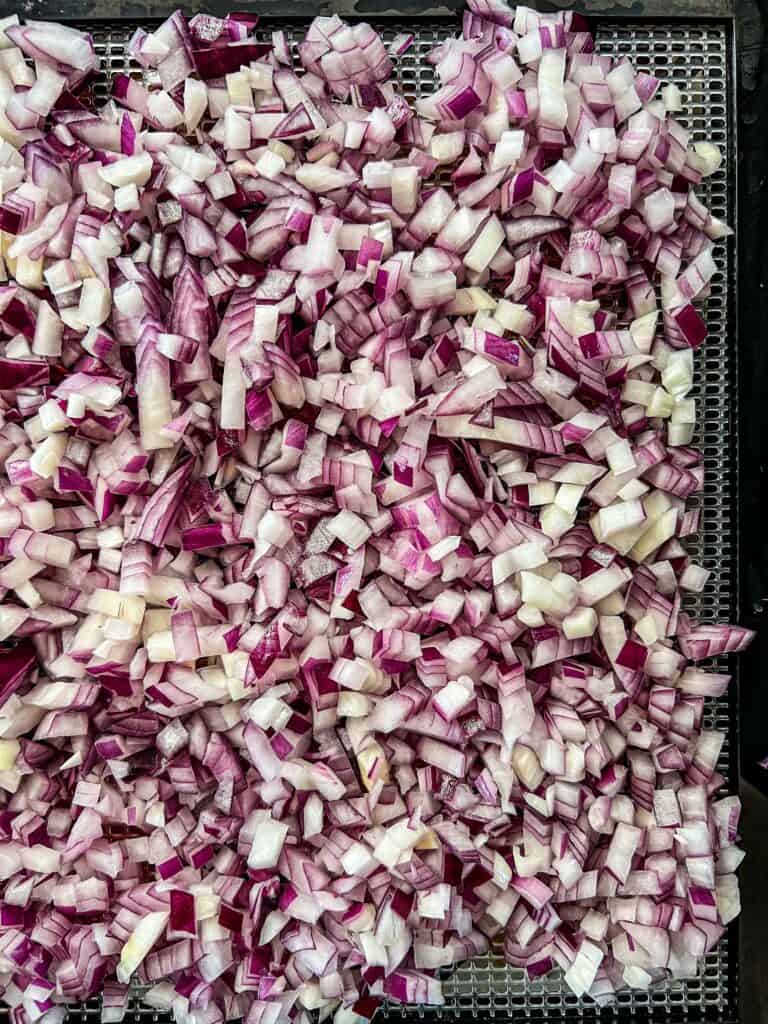
Dehydrating onion shrinks it down to a manageable size, making it shelf stable and long lasting (several years under optimal conditions and with the addition of an oxygen absorber.) Drying onions instead of freezing them frees up valuable freezer space. Canning can be messy, time consuming, and takes up a lot of jars and pantry space. Follow these guidelines if you are planning to can onions. Perhaps the biggest advantage to drying onions is having the dried onion pieces, onion flakes, and onion powder to throw into recipes without adding extra mess and effort to your overall cooking time.
Exactly How to Dry Onions
There are several ways to dry onions. Two of the best methods for drying onions include drying in a dehydrator and in an oven
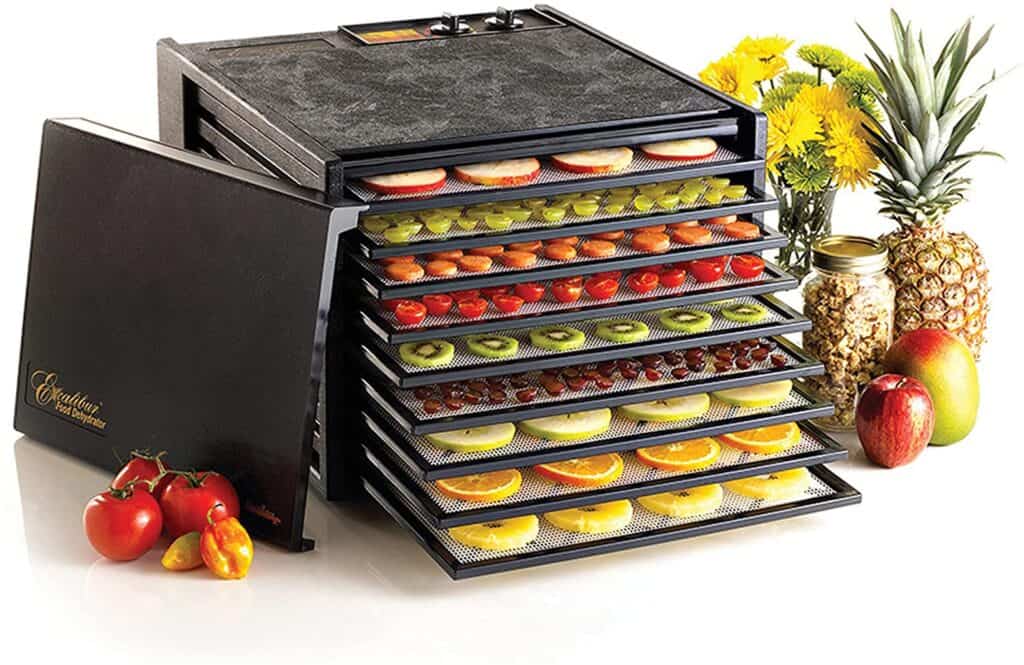

Drying Onions in the Dehydrator
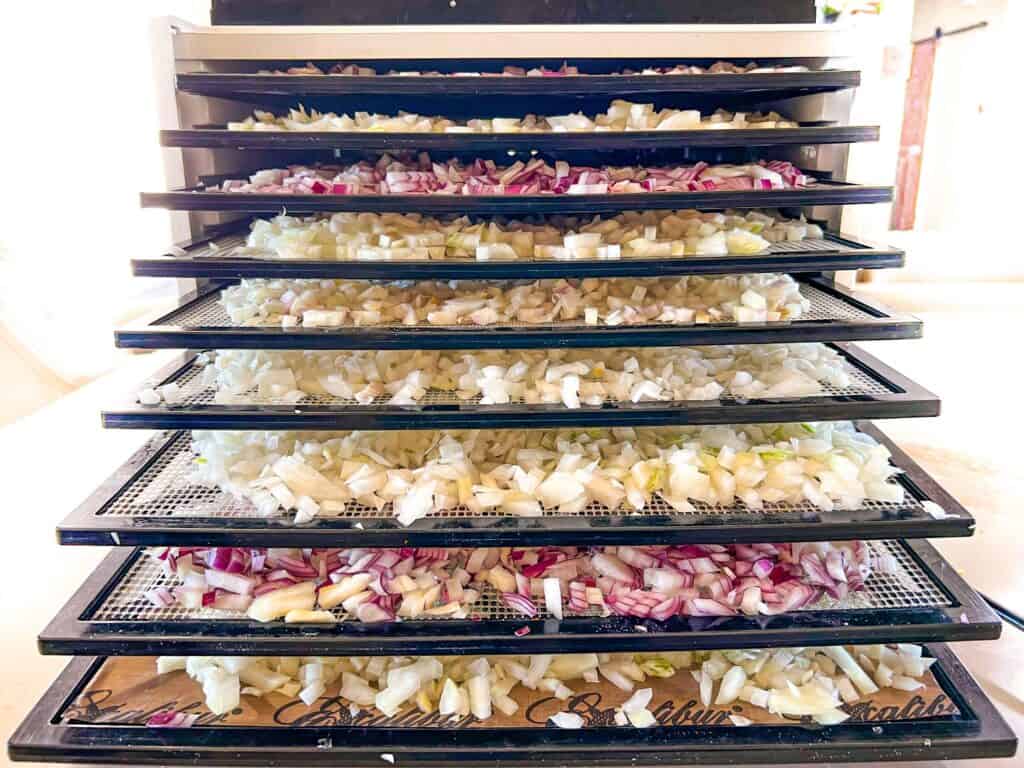
Step 1. If you are harvesting your onions directly from the garden, shake off as much soil as you can. If you don’t plan to peel, chop, and dehydrate right away, lay them out on a wire rack or a spread of cardboard to dry.
Step 2. Rinse off any remaining dirt. Peel and dice the onions to suit your needs. I like to do a fine dice so that they are more versatile in recipes. I use a chopper similar to this one! The right chopper can cut your job in half- I also use it for salsa and dehydrating garlic. If you want strips or onion flakes, simply julienne them. Aim for consistency in slicing to ensure that all of the onion pieces dehydrate at the same rate.
Step 3. Arrange the onions on your dehydrator trays, making sure that the onion is well spread out and not overlapping. Thick pieces and pieces piled on top of one another will take longer to dehydrate.
Step 4. Set your dehydrator to 125°F for 10-18 hours or until the onions feel dry and crisp. Drying time will depend on slice sizes and how evenly spread they are.
Step 5. Store in an airtight container with an oxygen absorber if possible. Keep the dried rhubarb out of direct sunlight to help prevent it from degrading in the light.
Drying Onions in the Oven
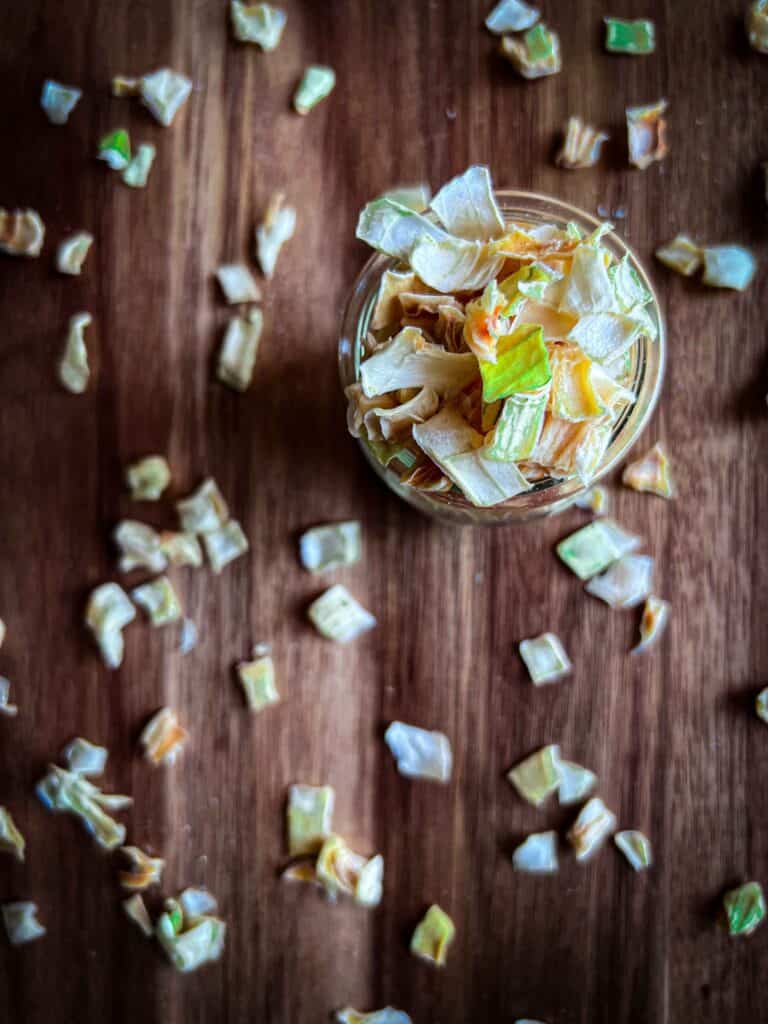
- Set your oven to the lowest possible setting (below 200°F). Some newer ovens have a dehydrate setting… this is perfect! If you are nervous about your onions getting “baked” instead of dried, you can prop the door open a few inches with a tea towel to help keep the temperature and humidity down.
- Finely dice the onions and spread them out in a single layer over a lined baking sheet. I use a chopper similar to this one! The right chopper can cut your job in half- I also use it for salsa and dehydrating garlic. The best piece of equipment you can buy for dehydrating in your oven these trays. I use them to make Sliced + Smoked Goose Jerky on my smoker. They will fit in a standard cookie sheet and encourage airflow around the onions.
- Place the trays in the oven at the lowest setting and allow the onions to dehydrate for at least 8 hours. Onions should be crisp to the touch.
- Store in an airtight container with an oxygen absorber if possible. Keep the dried onions out of direct sunlight to help prevent them from degrading in the light.
Batch + Storage
Onion’s flavor gets more intense after being dried. Substitute about 1/4 cup of dried onion for every 1 cup of fresh. Generally, a medium onion will yield about 1/3-1/2 cup dried onion. I usually just chop and dehydrate until my unit is full and hope for the best!
Store in an airtight container in a cool dark place. If possible, throw in an oxygen absorber to extend the shelf life of your onions.
Conditioning Onions
This is a super important step when doing any type of dehydrating to ensure that your food is properly dried and doesn’t mold. If you would like an in-depth explanation of conditioning dehydrated goods, see this post!
- Place your dehydrated onions in an airtight container or jar.
- Shake once daily, for a week.
- If you notice any moisture at this point, you will need to throw your onions back in the dehydrator.
- Once done, stow them away in a cool, dark place.
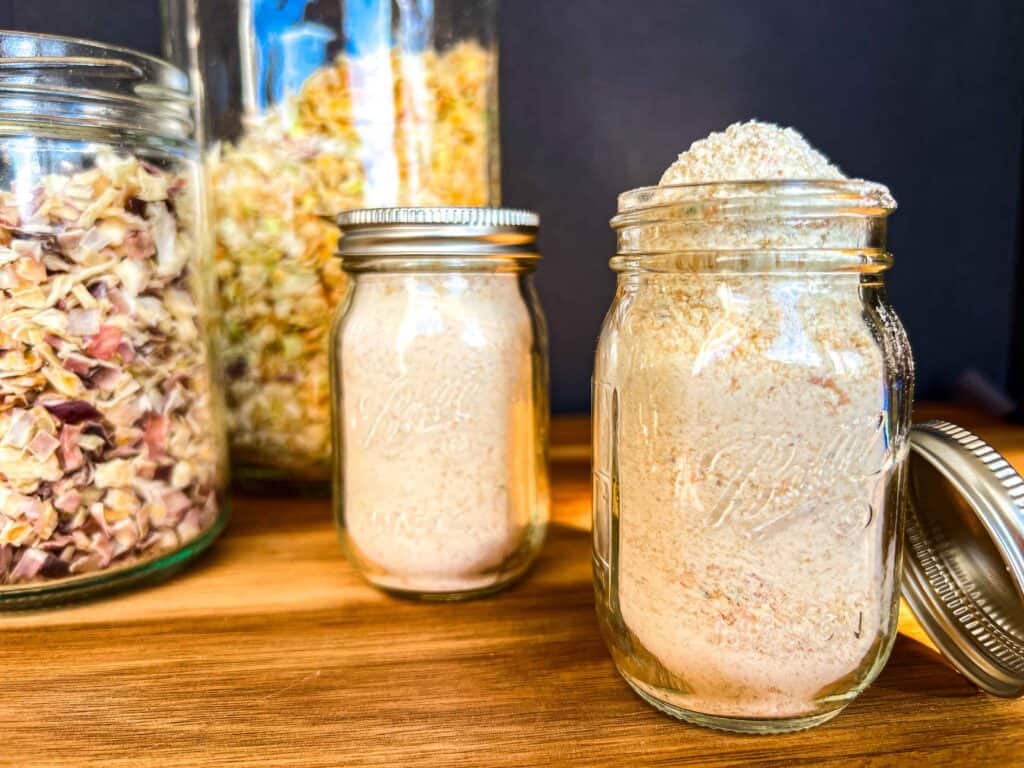
How to Rehydrate Dried Onions
Rehydrated onions easily take on ample water and return to their tender selves in no time!
Bring 2 cups of water to a boil. Add boiling water to your onions at a ratio of 2:1 and allow it to sit for 15 minutes before draining and using!
5 Delicious Recipe Ideas Using Dehydrated Onions
Read on to find out how to use dehydrated onions on the regular!
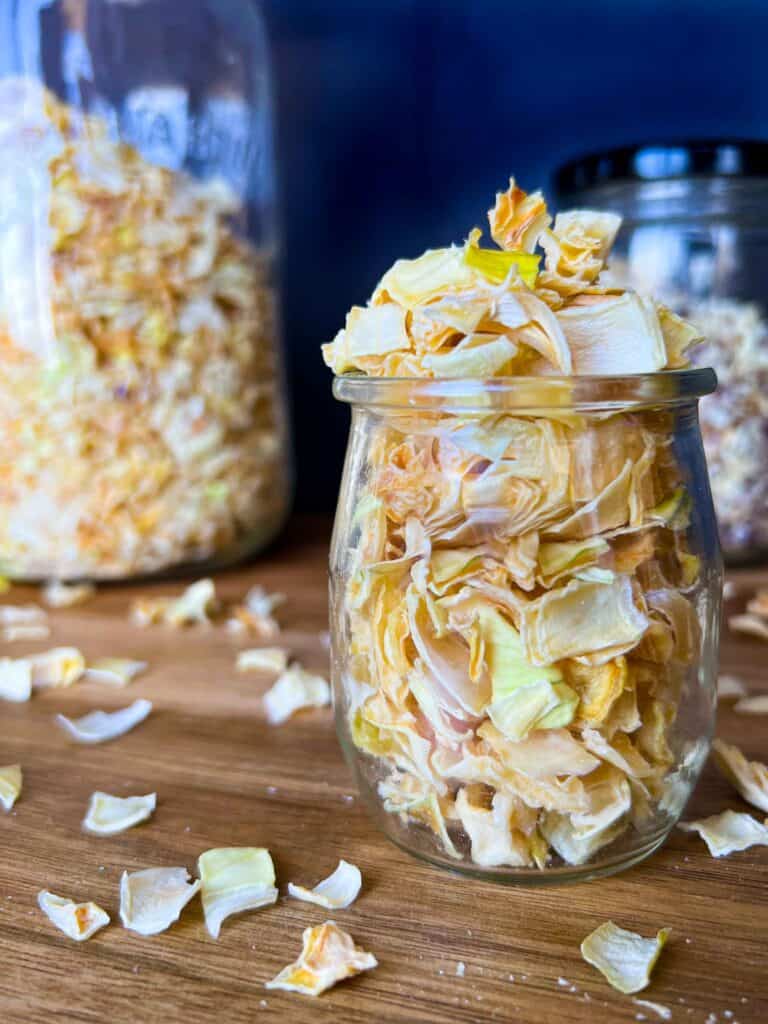
Dried Onion Powder- Onion powder can be used to flavour sauces, soups, in smoothies, and tucked into your favourite muffin to add the perfect amount of tang. Simply dehydrate your onions fully and buzz them in a blender or food processor. To achieve a super fine powder, you could also use a mortar and pestle.
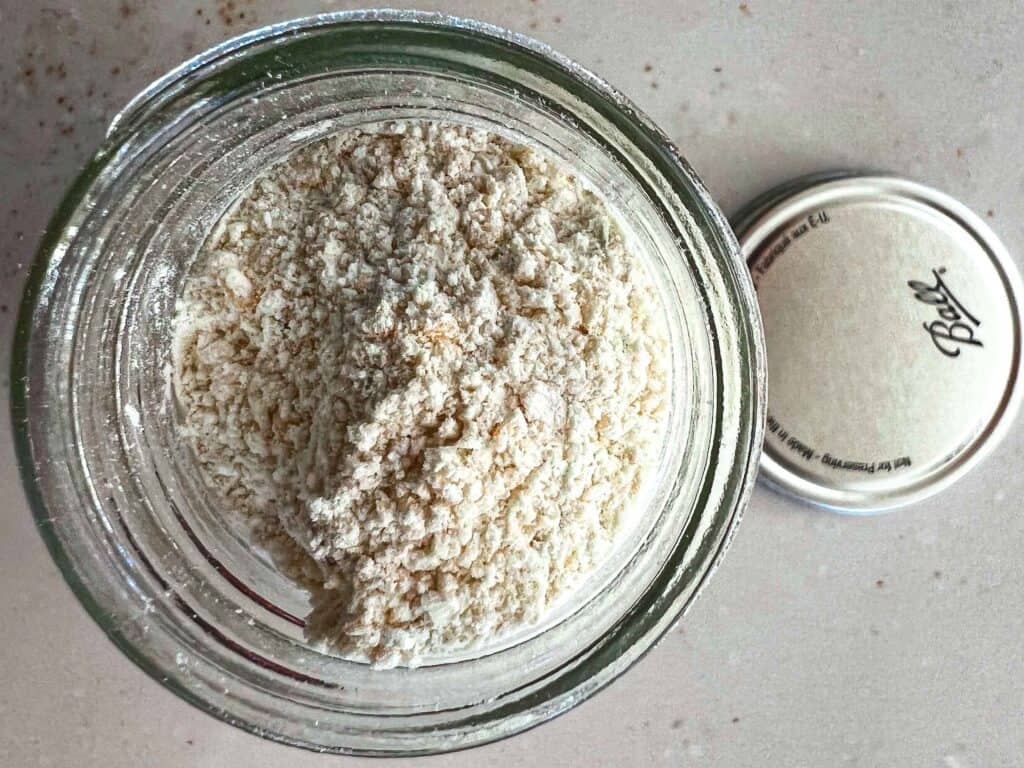

Homemade French Onion Soup Mix– This soup combines rich flavours of onions, garlic, celery, and many more to create a fully dehydrated shelf stable, ready to grab mix– perfect for cozying up in cool weather.
Dill Pickle Soup With Shredded Chicken– Swap out the fresh onions for dried onions in this pickle lover’s dream. The soup is bursting with brined pickles, fresh dill, and chicken. Use the garden veggies that you have on hand to fill this soup with home grown goodness.

Marinara Sauce- Throw your dried onions into this homemade marinara sauce to speed up the process and to enjoy your home grown onions in many different pasta dishes.
Dried Onion Dip Mix- Control the ingredients in your dip by incorporating your own dehydrated onions into the recipe!
Printable Dried Onion Recipe Card
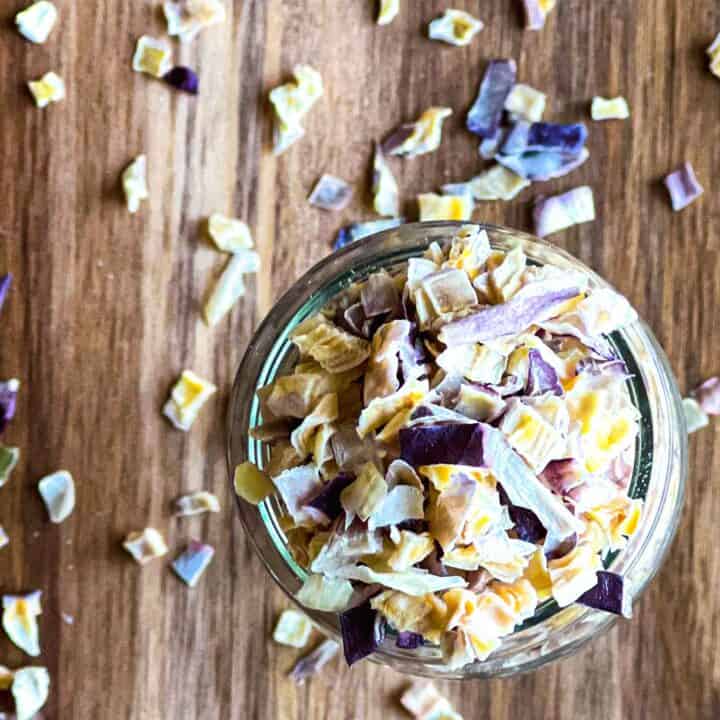
How To Dehydrate Onions and 5 Recipes With Dried Onions
Dehydrated onions can be used in a variety of applications including casseroles, egg dishes, dips, salad dressings, stews, sauces and even pulverized into powder. Onions can be added anywhere that you need a punch of flavor!
Ingredients
- 3 Medium Onions
Instructions
1. If you are harvesting your onions directly from the garden, shake off as much soil as you can. If you don’t plan to peel, chop, and dehydrate right away, lay them out on a wire rack or a spread of cardboard to dry
2. Peel and dice the onions to suit your needs. I like to do a fine dice so that they are more versatile in recipes. Aim for consistency in slicing to ensure that all of the onion pieces dehydrate at the same rate.
Dehydrator:
3. Arrange the onions on your dehydrator trays, making sure that the onion is well spread out and not overlapping. Thick pieces and pieces piled on top of one another will take longer to dehydrate.
4. Store in an airtight container with an oxygen absorber if possible. Keep the dried rhubarb out of direct sunlight to help prevent it from degrading in the light.
Oven
3. Spread the onions out in a single layer over a lined baking sheet. The best piece of equipment you can buy for dehydrating in your oven these trays. I use them to make Sliced + Smoked Goose Jerky on my smoker. They will fit in a standard cookie sheet and encourage airflow around the onions. Parchment paper will work in a pinch!
4. Place the trays in the oven at the lowest setting and allow the onions to dehydrate for at least 8 hours. Onions should be crisp to the touch.
5. Store in an airtight container with an oxygen absorber if possible. Keep the dried onions out of direct sunlight to help prevent them from degrading in the light.
Notes
CONDITIONING ONIONS
This is a super important step when doing any type of dehydrating to ensure that your food is properly dried and doesn’t mold.
- Place your dehydrated onions in an airtight container or jar.
- Shake once daily, for a week.
- If you notice any moisture at this point, you will need to throw your onions back in the dehydrator.
- Once done, stow them away in a cool, dark place.
Recommended Products
As an Amazon Associate and member of other affiliate programs, I earn from qualifying purchases.
Nutrition Information:
Yield: 6 Serving Size: 1Amount Per Serving: Calories: 21Total Fat: 0gSaturated Fat: 0gTrans Fat: 0gUnsaturated Fat: 0gCholesterol: 0mgSodium: 1mgCarbohydrates: 5gFiber: 1gSugar: 2gProtein: 1g
♥Thanks for supporting me! Sharing, commenting, and reviewing all help to spread the word about Modern Harvest and help to grow the site! As an Amazon Associate I earn from qualifying purchases. I will never promote or link products that I don’t personally use or love. ♥
Pin It! Sharing is Caring <3
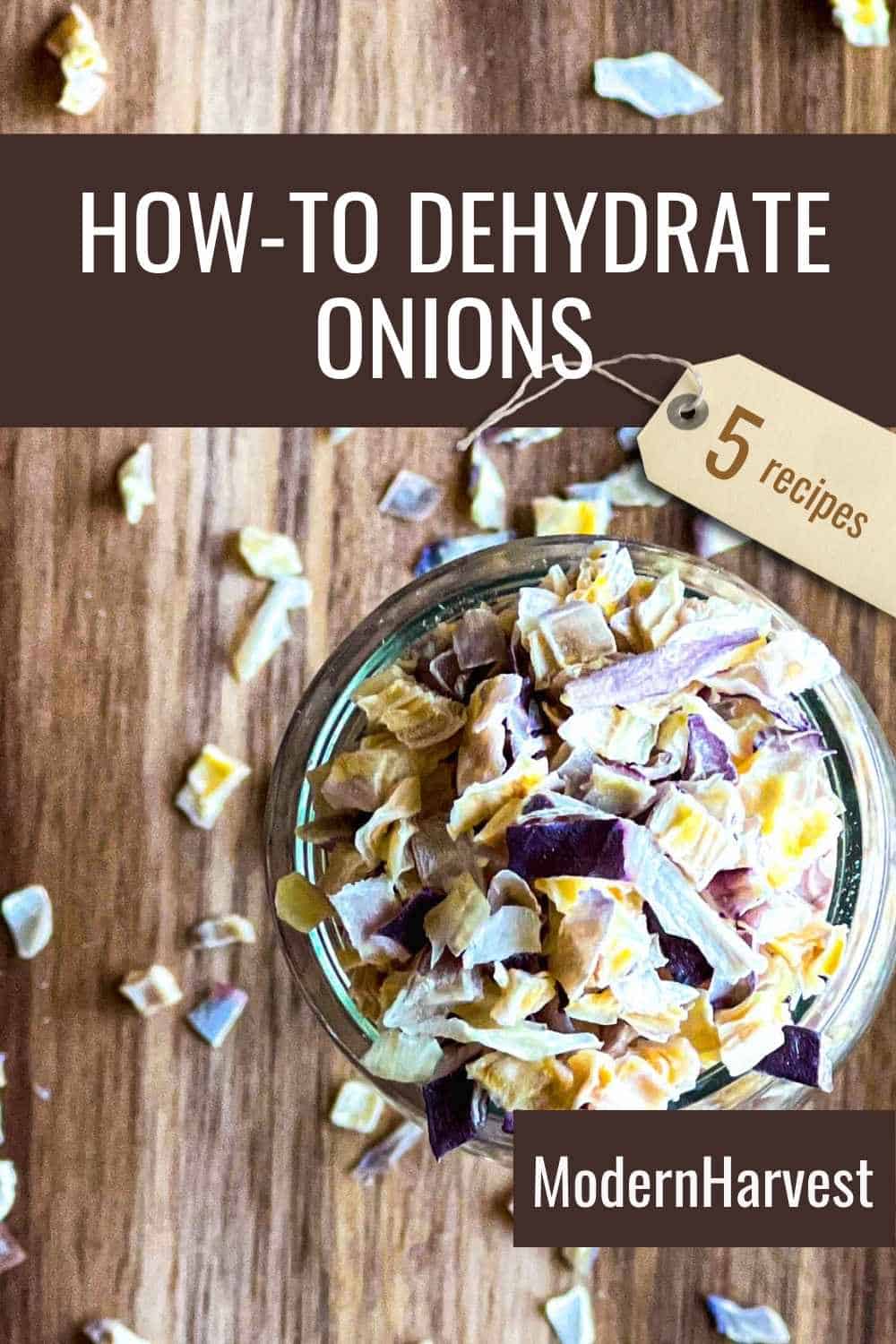


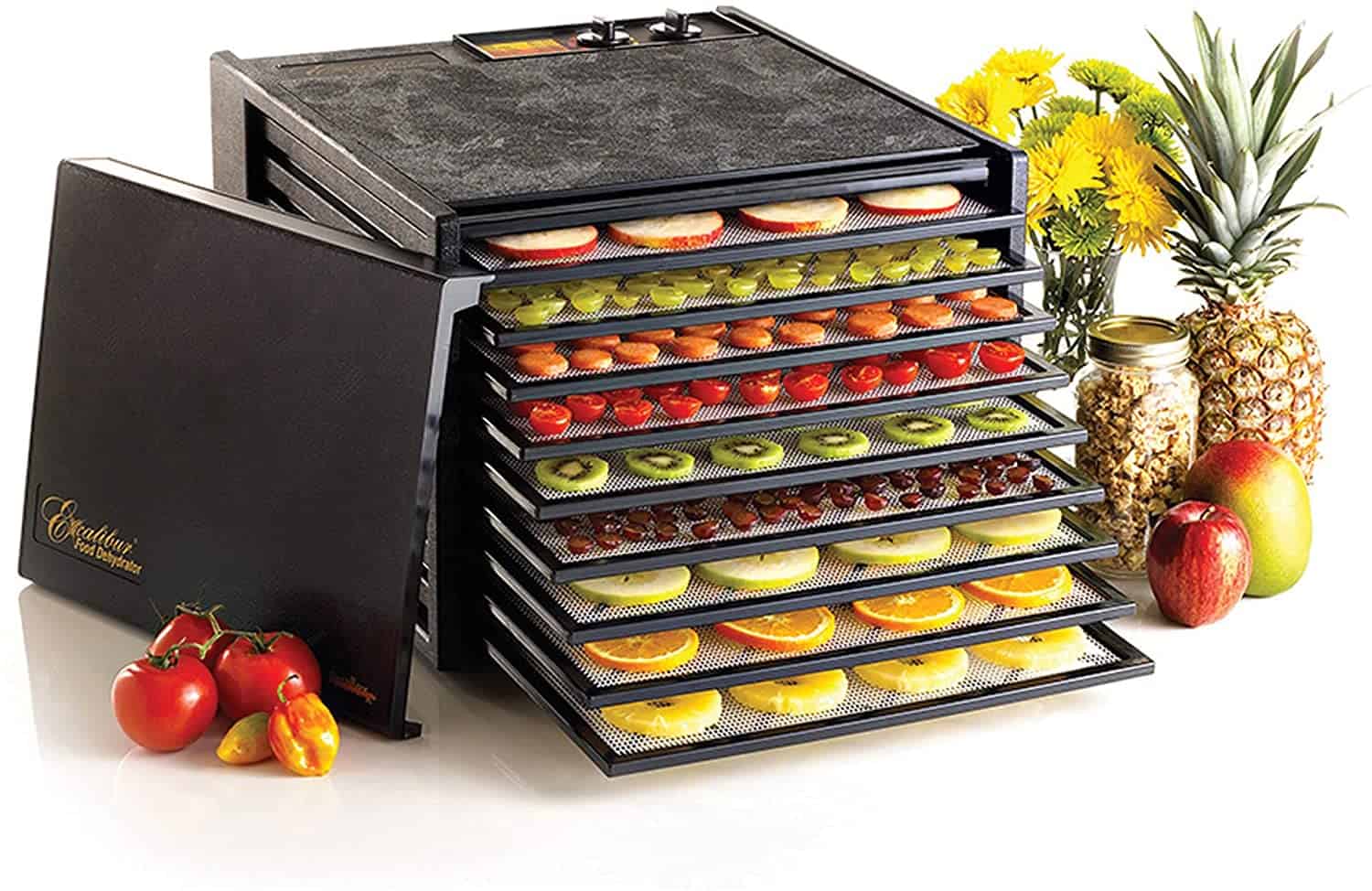
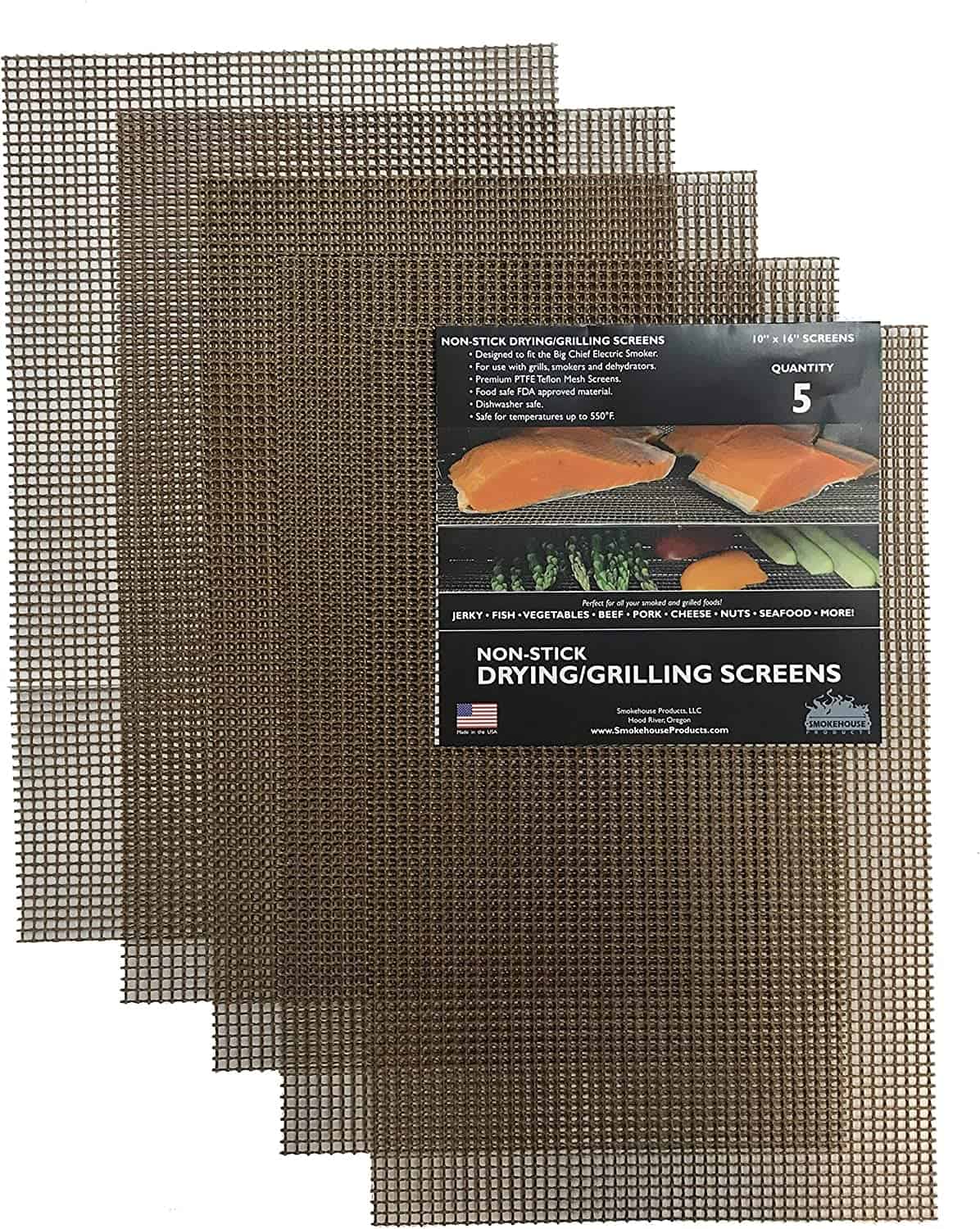
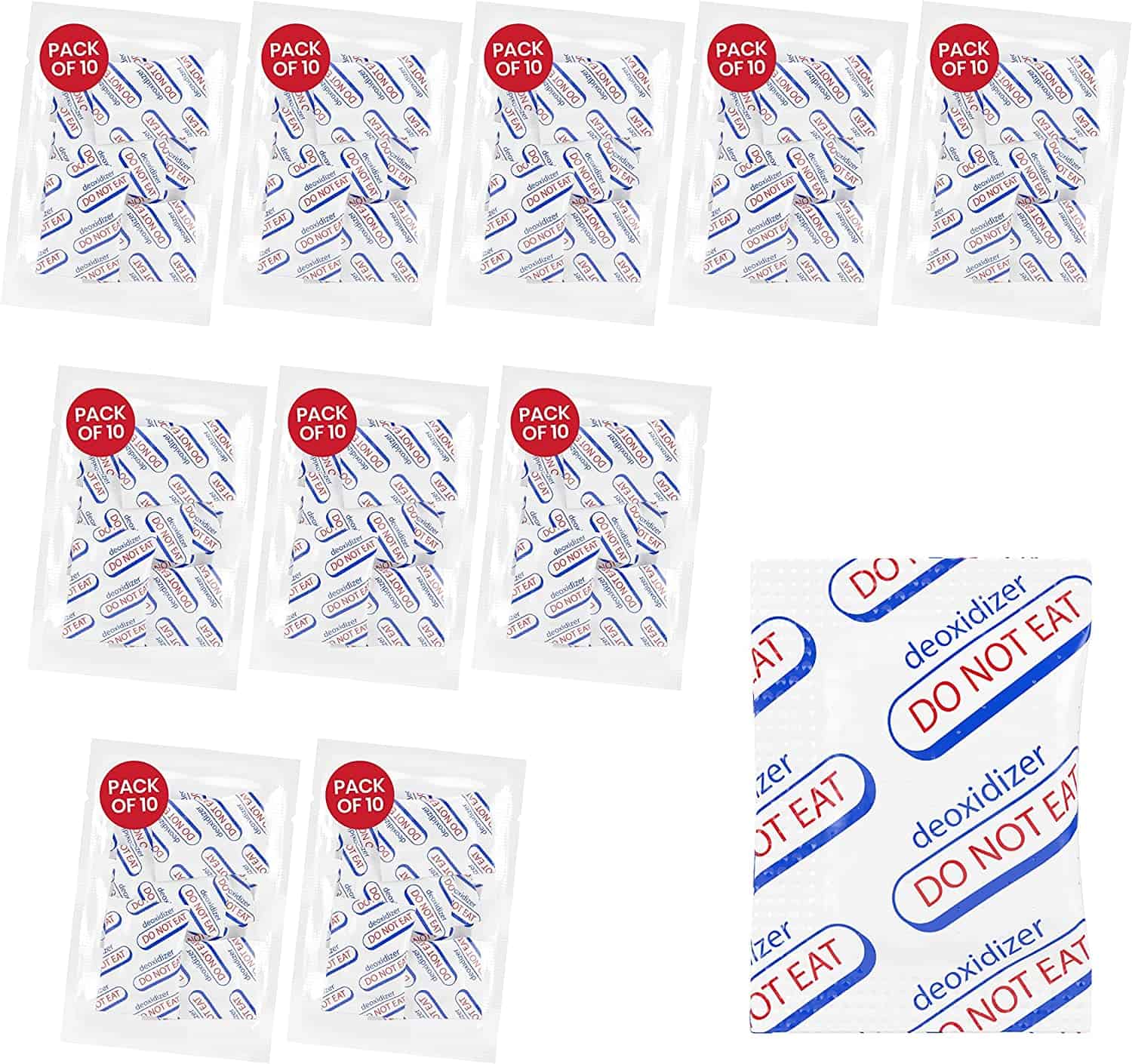
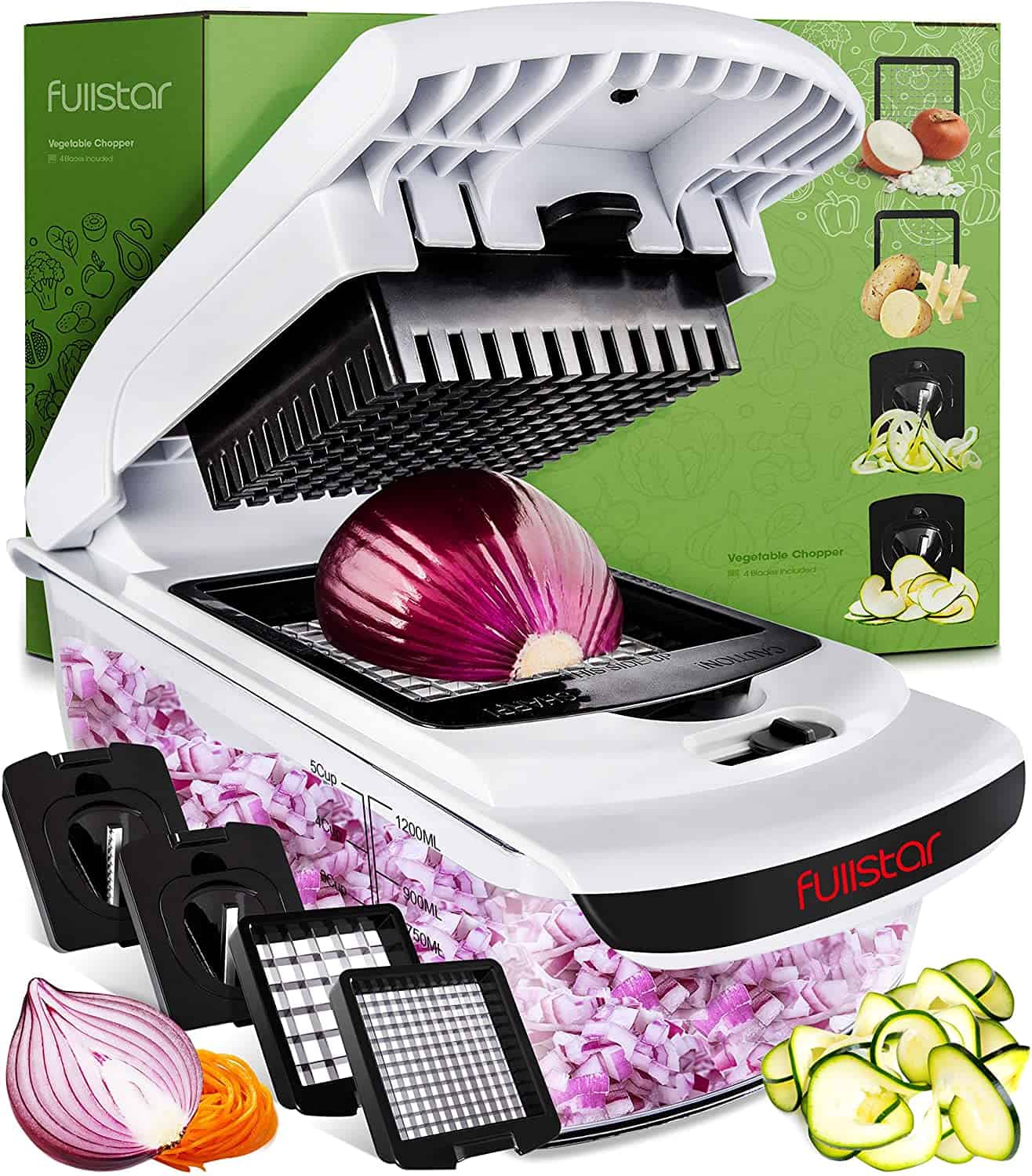
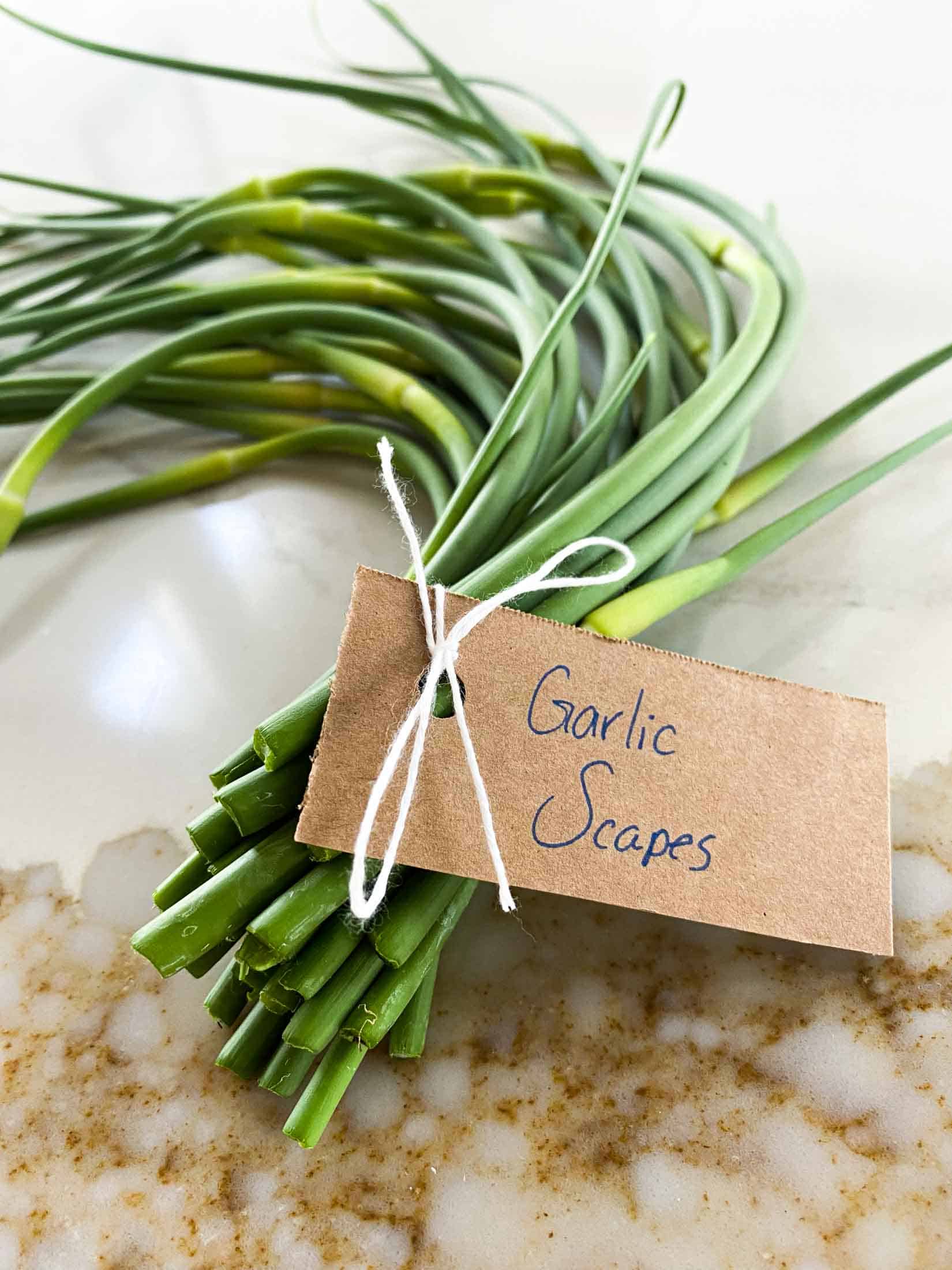
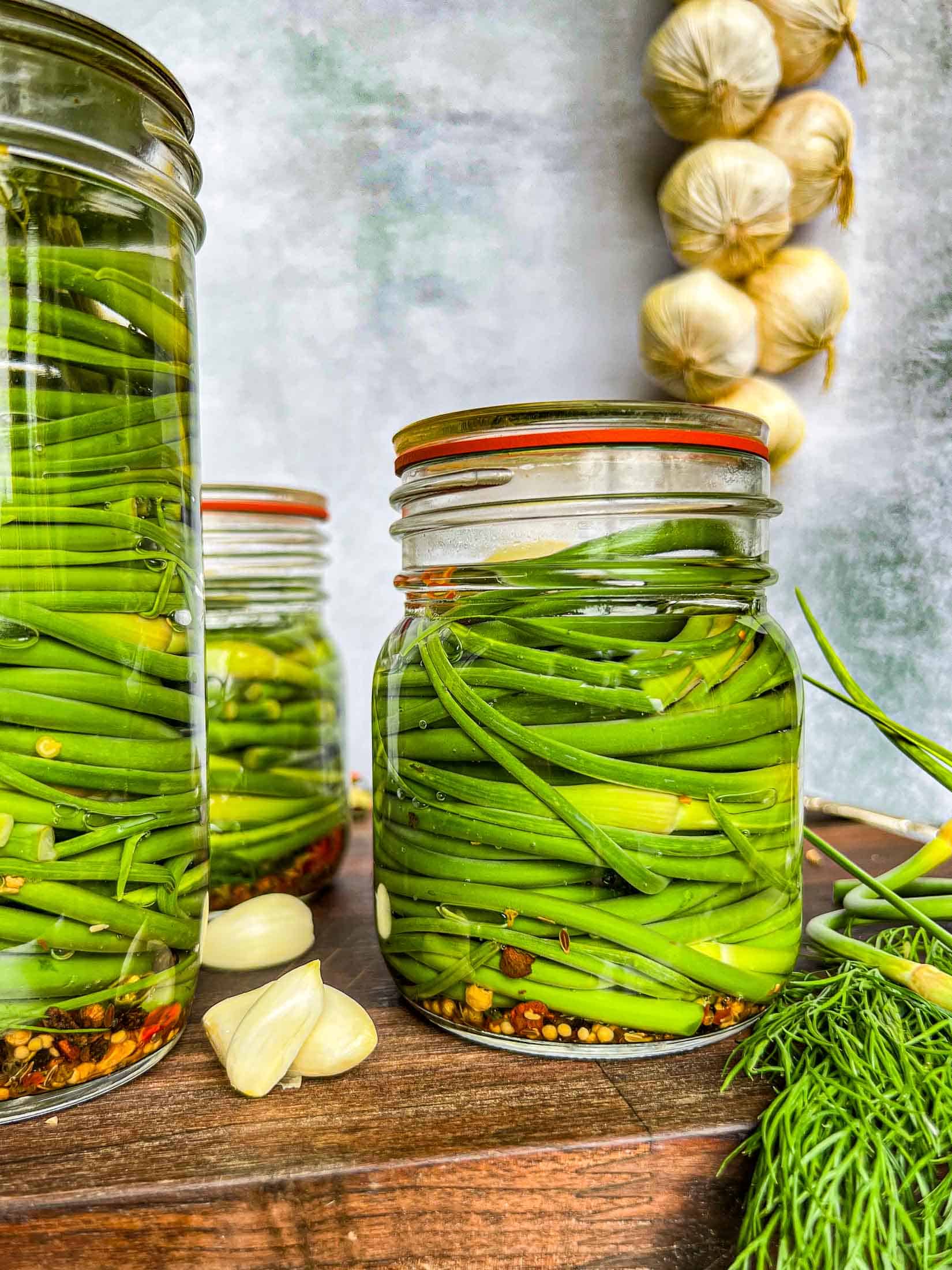

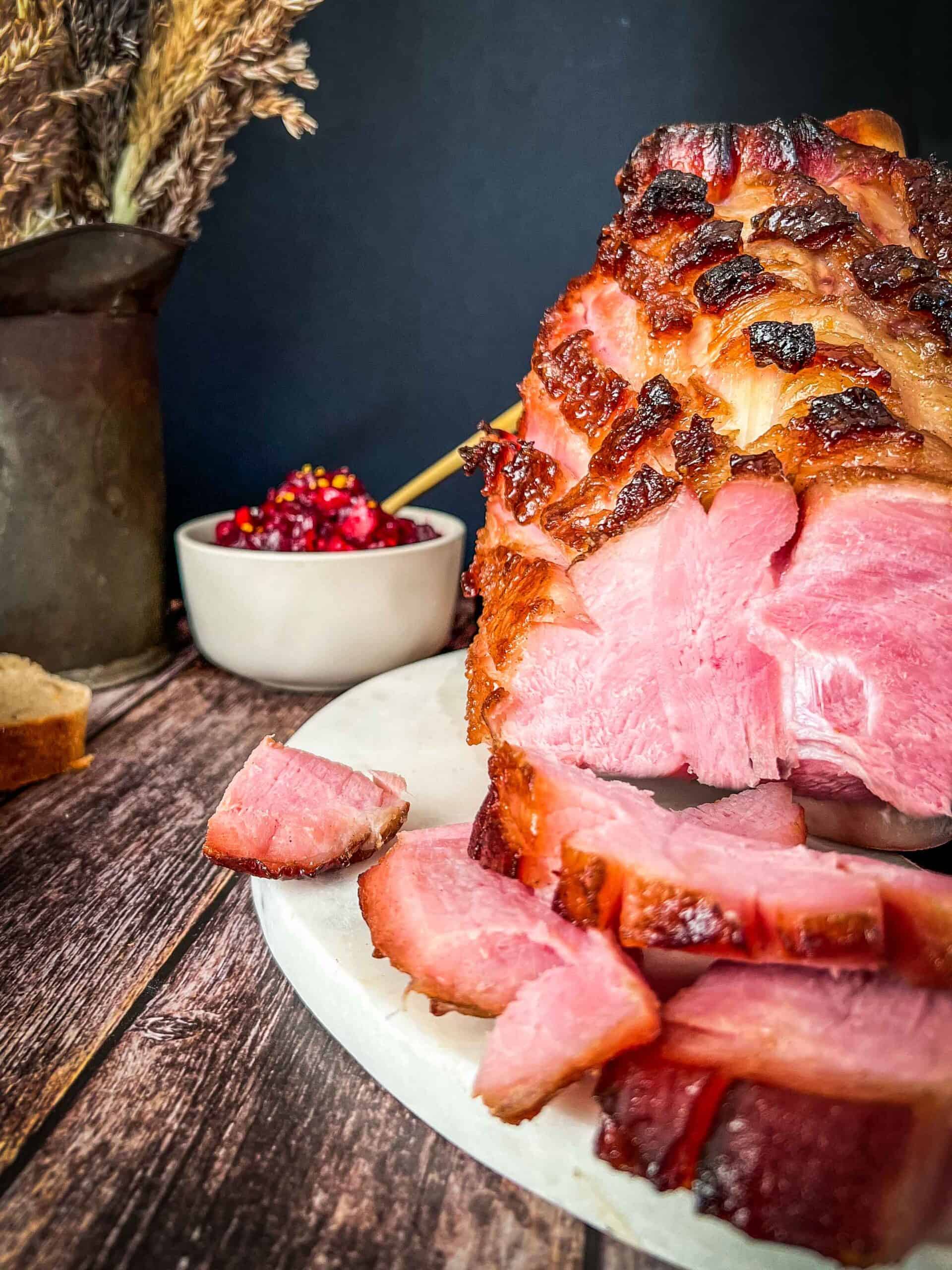
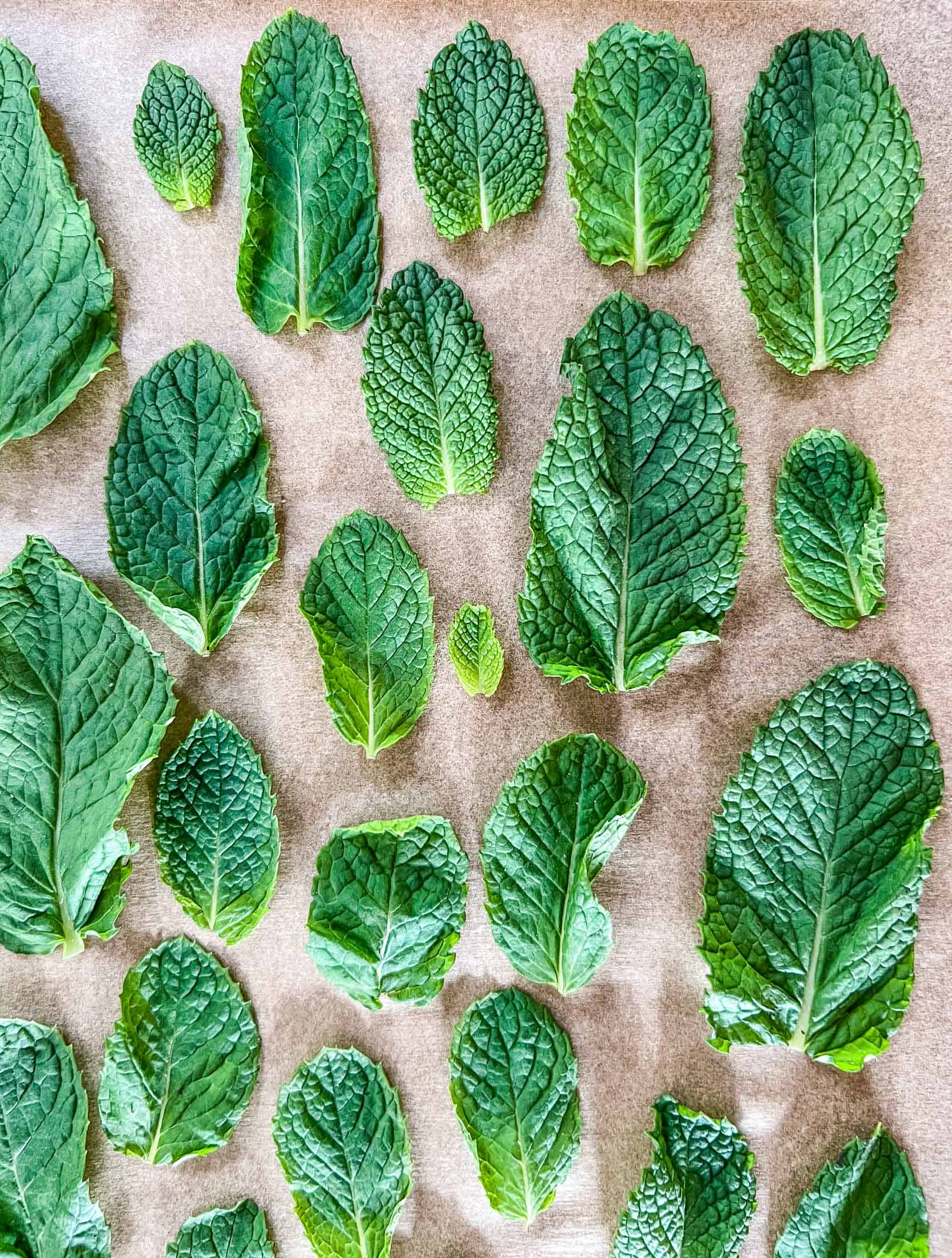
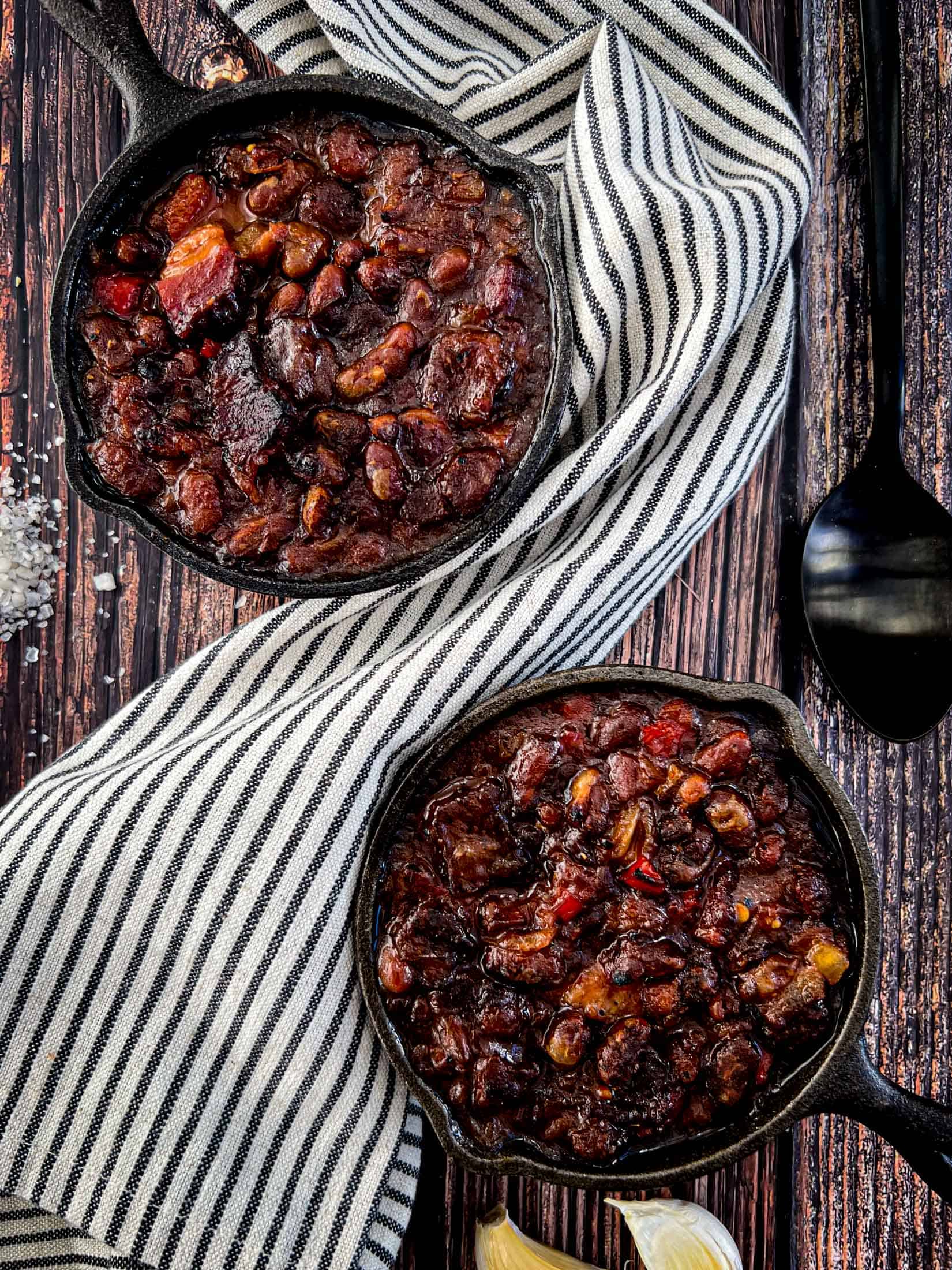
So glad I came across this! I was blessed with a bumper crop of onions and I was worried about what to do with them. I think I’m going to dehydrate a bunch of them – then I can add them to sauces, soups, meatloaf, all the things I normally add onions to over the winter!!